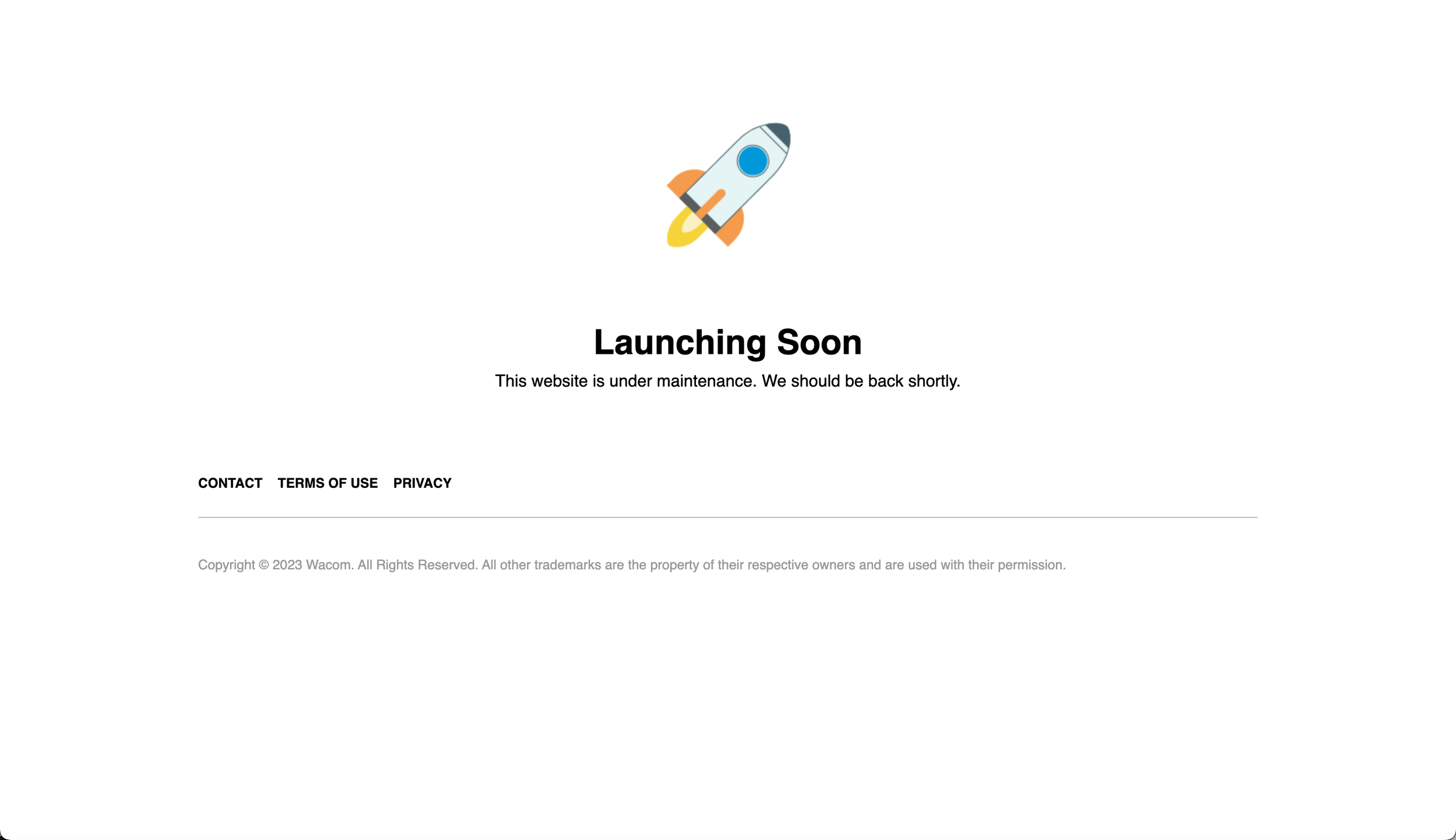Oh Wacom!
Its a shame isn’t it… I’ve just bought myself a new Wacom tablet. Nothing too flash and expensive, but you know, it turned up in the post. I unboxed it and wanted to plug it in, test it works, and get some joy from trying it out. Of course I had to download the most recent drivers from the website, but…
I’m left feeling a bit deflated. Look at their website message. I can’t download the driver and no idea when things will be back up and running as they haven’t given a time frame. What does ‘soon’ mean? Minutes, Hours, Days, Weeks….
Wacom maintenance page, August 2023
But you know, in the meantime I went off and did a little research and found this article on Smashing Magazine by Cameron Chapman.
Wacom do appear to have met some of the best practice guidelines mentioned:
It’s useful and simple (lets people know that the site is still ‘there’, and it uses simple language - great for when the communication is not in someones first language – but I also assume is Wacom is German, they’ve translated the message for the English speaking market). ✔
It should acknowledge the inconvenience to your customers… mmm, doesn’t quite uphold this one. ✘
Don’t be afraid to use humour. ✘
Make sure your page is visually consistent with the rest of the site / brand guidelines / branding. [At the time of writing the whole site is down, so can’t comment!]
Let visitors know when your site will be back. ✘
Provide alternative content – the article suggests keeping a few articles on a static page for downtimes – perhaps Wacom should at least consider a link to drivers… so the unboxing momentum doesn’t get lost. ✘
Invite users to come back when the site is working again – visitors can fill in a form, so you only email those that visited at the time it was down, rather than spamming everyone. ✘
Keep the visitors informed of progress when they come back, such a bulletin style board with updates. Maybe the rocket should keep getting higher as development progresses!! ✘

